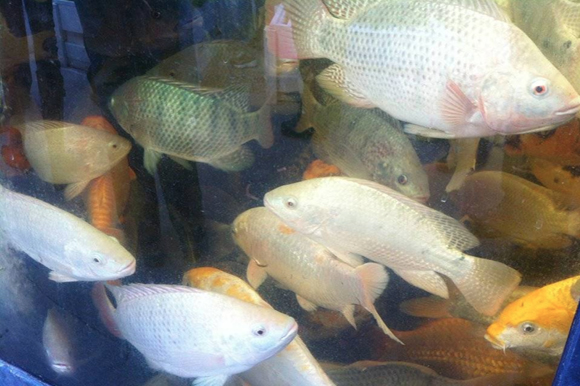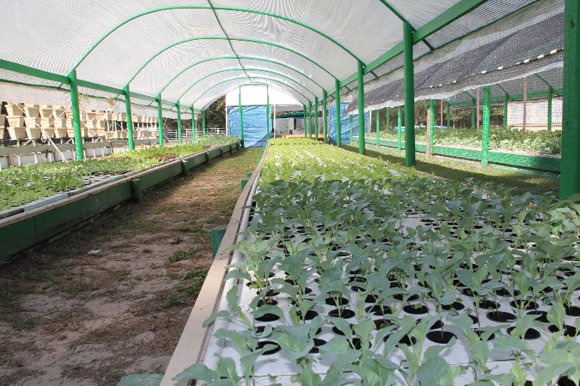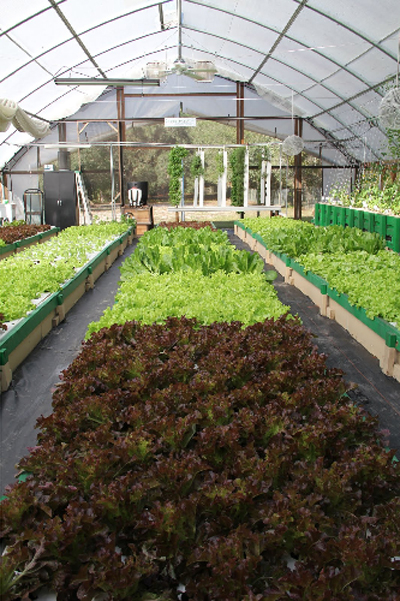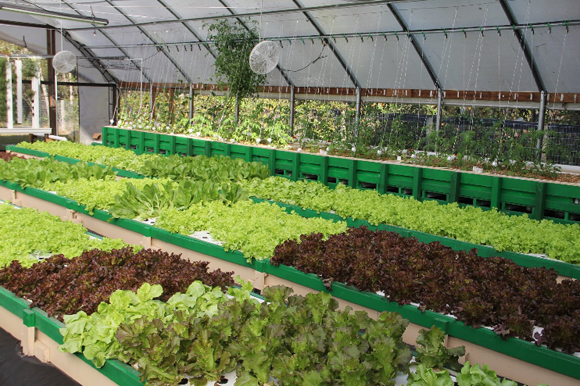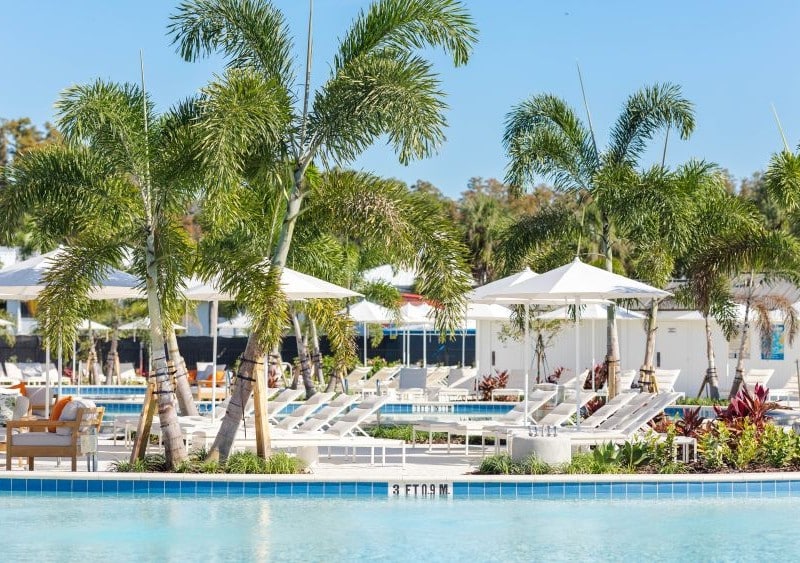Aquaponics: Sustainable Fish Farming Thrives In Florida
Where does the fish on your plate come from? Eco-friendly fish farming known as aquaponics continues to pick up steam in the Tampa Bay area. Experts say the emerging industry is growing fast.
It’s no secret that the Tampa Bay region is home to some of the best fishing in the world. Spotted sea trout, red drum, and even the prized king mackerel can be found off the Sunshine State’s Gulf coast. It’s no surprise that about 90 percent of the tropical fish sold in the U.S. originate from this region. But what many don’t know is that some of Florida’s freshest fish is actually bred on land.
Fish farming is an emerging trend in these parts — one that’s attracting hobbyists, researchers and food sellers alike. Over the last decade, the industry has evolved substantially, forging a new and unexpected path for sustainable agriculture.
More and more farmers are exploring what’s known as aquaponics (a cross between aquaculture and hyrdroponics). The result is a hybrid system that breeds fish and plants at the same time.
“The current surge is aquaponics because a lot of people want to grow their own food and be ‘locavores’,” says Portia Sapp, Bureau Chief for the Florida Department of Agriculture and Consumer Services’ Division of Aquaculture. “People are growing vegetables and herbs in their backyards and also growing it with food fish or other types of aquaculture products that they can consume.”
So how does it work? The setup looks more like a science project than a fish farm, but the results are worth it. In most cases, external tanks serve as the fish-rearing space. Next to that are bin-like hydroponic troughs or beds where vegetables float on top. The water supply flows back and forth between the two fixtures, each one supporting the other.
Sustainability Key To Success
Nutrient-rich water flows out of the fish tanks and into where the plants are growing. (The plants actually thrive on the nutrients in fish waste.) Then the water, which is cleaned in the process, is returned back to the tanks. This recirculation seriously reduces water use. The process also cuts down on fertilizer input. When compared to aquaponics, raising fish the old fashioned way is water intensive and also involves a lot of fish waste that then needs to be disposed.
“It’s a more eco-friendly way of raising food fish,” says Richard Tyson, PhD., director of the Orange County extension of the University of Florida’s Institute of Food and Agricultural Sciences. The educational program aims to take knowledge from the university and spread it out into Florida communities.
According to Tyson, everything from lettuce, tomatoes, herbs and cucumbers can be grown right alongside a fish tank.
“The problem is that since fish waste is involved, it’s been difficult to get a passing grade for aquaponic vegetables from food safety auditors,” says Tyson.
But before you scurry away at the thought of eating veggies grown with the help of fish waste, Tyson and other experts reassure that it’s perfectly safe. (E. coli and other common food pathogens are not part of fish waste.) In fact, in the nearly 15 years since Tyson has been working with aquaponics, he’s never seen an association between this method of fish farming and foodborne illness.
Solution For Protecting Environment
Industry experts say that a USDA label is in the works. Some anticipate it possibly coming through within the next year or so. In the meantime, it’s unlikely that Florida fish farmers will be able to sell to large supermarket chains without it. Instead, their home-grown fish and vegetables are available at local restaurants and farmer’s markets.
“[Aquaponics] is a great solution as far as not overfishing our oceans,” says Gina Cavaliero, CEO of Green Acre Aquaponics in Brooksville. “There’s certainly ways we can do this and produce food, and not compromise our environment so much.”
According to Cavaliero, farming fish aquaponically also relieves concerns about eating seafood from the oil-stricken Gulf of Mexico.
Green Acre Aquaponics currently raises tilapia and koi fish using an aquaponic system. They will soon be adding catfish to their operation, which is an emerging food fish in the Tampa Bay region.
“We have a demand for at least 80 to 100 pounds of catfish a week,” says Cavaliero.
Green Acre periodically sells to farmers markets in Hernando, Hillsborough and Pinellas counties. They also have an online market.
Like most Tampa area fish farmers, Green Acre doesn’t use hormones in the production process. If a fish becomes diseased and requires antibiotics, it is quarantined in a separate tank until it’s ready to be reintroduced to the system.
That’s when researchers from the University of Florida’s Tropical Aquaculture Laboratory in Ruskin enter the picture. Director Craig Watson says his team supports farmers with disease diagnostics.
“There’s a renewed amount of interest in food fish production in Florida,” says Watson, who works primarily with ornamental fish (think tropical fish and other fish not used for food or bait).
Ornamental fish and other marine life represent another huge market. The Division of Aquaculture estimates that there are 400 varieties of tropical fish produced in Florida, as well as hundreds of varieties of aquatic plants. The majority come from Hillsborough, Polk and Dade counties. From there, they’re sold nationally to pet stores and hobbyists.
Marianne Hayes is a writer, wife, mother and bookworm in the Tampa Bay region of Florida. You can read about her adventures in motherhood on her blog, With Kids in Hand. Twitter: @HayesMarianne. Comments? Contact 83 Degrees.

